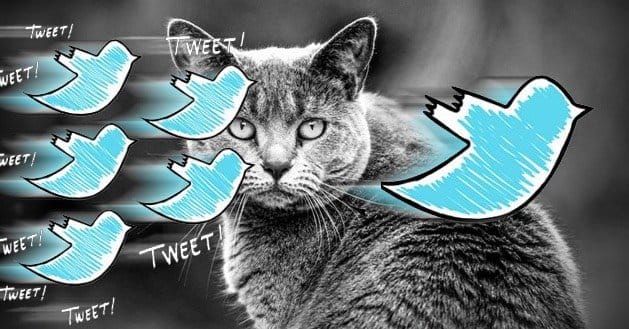 Written by ContentPowered.com
Written by ContentPowered.com
Autofollow is a feature many third party Twitter management programs incorporate, if you want to use it. The idea is that you can automatically follow anyone who follows you. As a business owner or other individual invested in the quality and value of your Twitter feed, you have to make the choice; do you want to use an autofollow app, or do you want to avoid it? Also, do you want to take advantage of users who use autofollows, or not?
On one hand, autofollow has benefits. You can very quickly increase your number of followers even from an otherwise blank account, by following people who follow you back. If those people aren’t paying attention, you can even unfollow them afterwards to keep your follower count up by prune back your followed list.
Autofollow on your end allows you to reward anyone who follows you in a simple, automatic way. Even the most minor personal account will enjoy being followed by a brand or individual they respect.
On the other hand, there are a few good reasons to avoid autofollow on both sides.
1. They Probably Aren’t Engaged
Twitter is not all about the numbers. An account with 10 highly engaged followers is going to have a higher conversion rate than an account with 1,000,000 bot followers. Think about it this way; when a user is selective about who they follow, they put a high value on their attention. This means they care about what they see in their feed, and that means if they follow you, they’re putting value on what you have to say. It’s a vote of confidence and a sign that they are truly interested in you.
On the other hand, a user who autofollows everyone in sight is a user who puts a very low value on their attention. Chances are good they will do little more than skim their Twitter feet, reading and responding to very little. Your message will be lost in the crush of other people posting every day. If you’ve ever tried to keep up with an account with thousands of followed users, you’ll know how hard it can be to keep aware of everything.
2. More Followers Dilutes Your Message
Facebook has algorithms that show your message only to those who are most engaged with your page. Twitter has no such sorting; it’s strictly chronological. That said, however, Twitter users must carefully manage their feeds if they want to be able to keep up with everything. Your tweets technically reach everyone who follows you, but they can be very quickly pushed away by the press of other, more recent tweets. As a result, only a percentage of your users will actually see your message.
On one hand, it may seem like more users seeing your message will mean more views and more engagement on that message. In reality, however, most people who autofollow accounts won’t see what you have to say through the crush of other messages. You need to work a lot harder and gain a lot more momentum for your message to show up, and many of these people won’t be all that active anyway.
Part of success on Twitter is getting to a critical mass of people seeing and retweeting your message, and interacting with you when they do. You need to make sure that your message is reaching as many engaged users as possible. Users who autofollow are typically some of the least engaged, and thus are not valuable to your success on the platform.
3. Your Followed List is Important
The list of people you follow is a very important indicator of how seriously you take the platform. For example, if you were to investigate a major company to see who they follow, which would you rather see? A list of a million people you would never care about, or a selective list of a thousand power users, all of whom post valuable content?
Users can see the users you follow, and they can make use of that knowledge. They can, for example, analyze the people you follow to see what sort of information you are most interested in seeing. If you follow everyone who follows you, there’s no coherence to the messages you receive.
Many users like to follow people they discover through the following lists of the people they follow. This helps them build an interesting circle of incoming information. If your list is full of people who don’t matter, they’ll disregard your list as valueless, and they may extend that analysis to you as well.
4. It’s Harder to Find Value
It’s harder for you, personally, to find value in your twitter feed if it’s flooded by people writing tweets to their best friends and about the antics of their pets. You will be forced into heavy reliance on @mentions and hashtag usage, rather than paying attention to your full feed.
If you are selective with the people you follow, you’ll have a highly curated and valuable stream of content at all times. It will be difficult or impossible to log in and not see something interesting or useful. On the other hand, if you flood your followed list with average users, the majority of what you see will be worthless.
Once again, it comes down to focus, engagement and numbers. You don’t need a huge number of barely-related users in your feed. It’s much more valuable to you to have a smaller list of useful people writing content you want to see.
5. Spam Accounts Find Their Way In
In the middle of last year, Twitter realized they had a problem; they were at the center of one of the largest underground markets for the buying and selling of illegitimate follows. At the core of this scene is the autofollow; robotic accounts with no real value set to follow people on demand.
In order to combat the spam found on their site, Twitter took steps to limit what bots can do. Among those steps is the crackdown on autofollows. You can still use third party services to automate the system, but it’s more difficult and it’s somewhat frowned upon by the community.
In short, autofollows are typically incredibly low value, often tied to spam and serve very little benefit to counteract the negatives you face.

